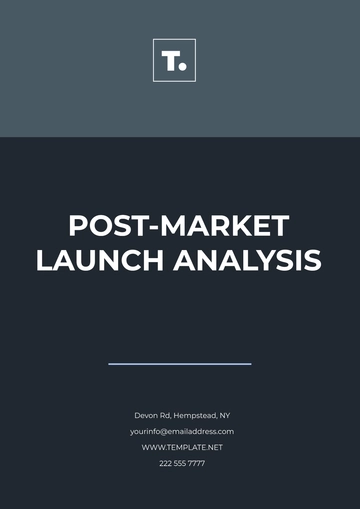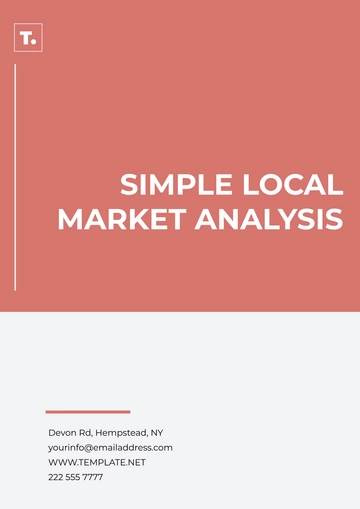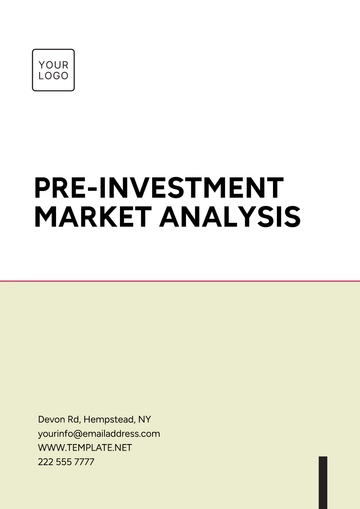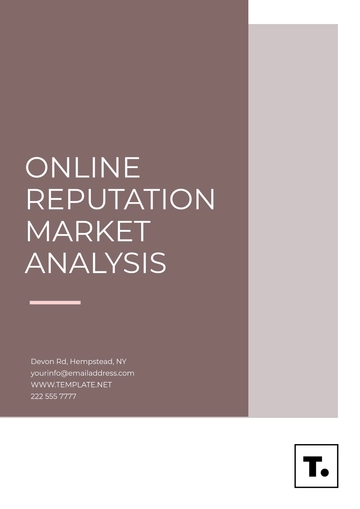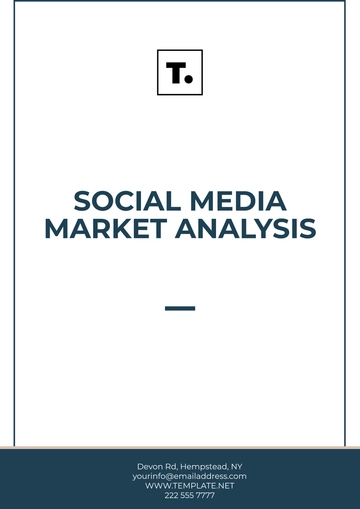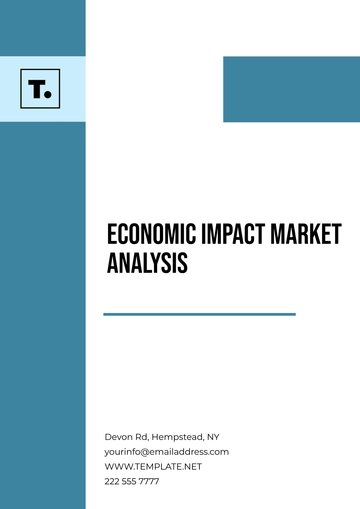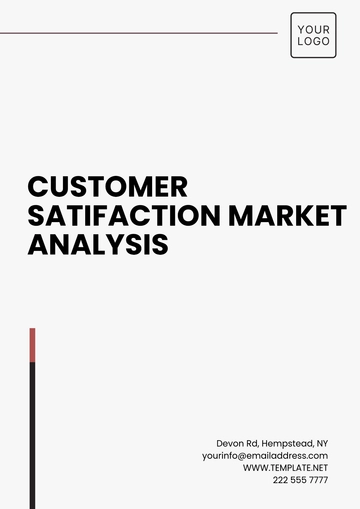Free Professional Foreign Market Analysis
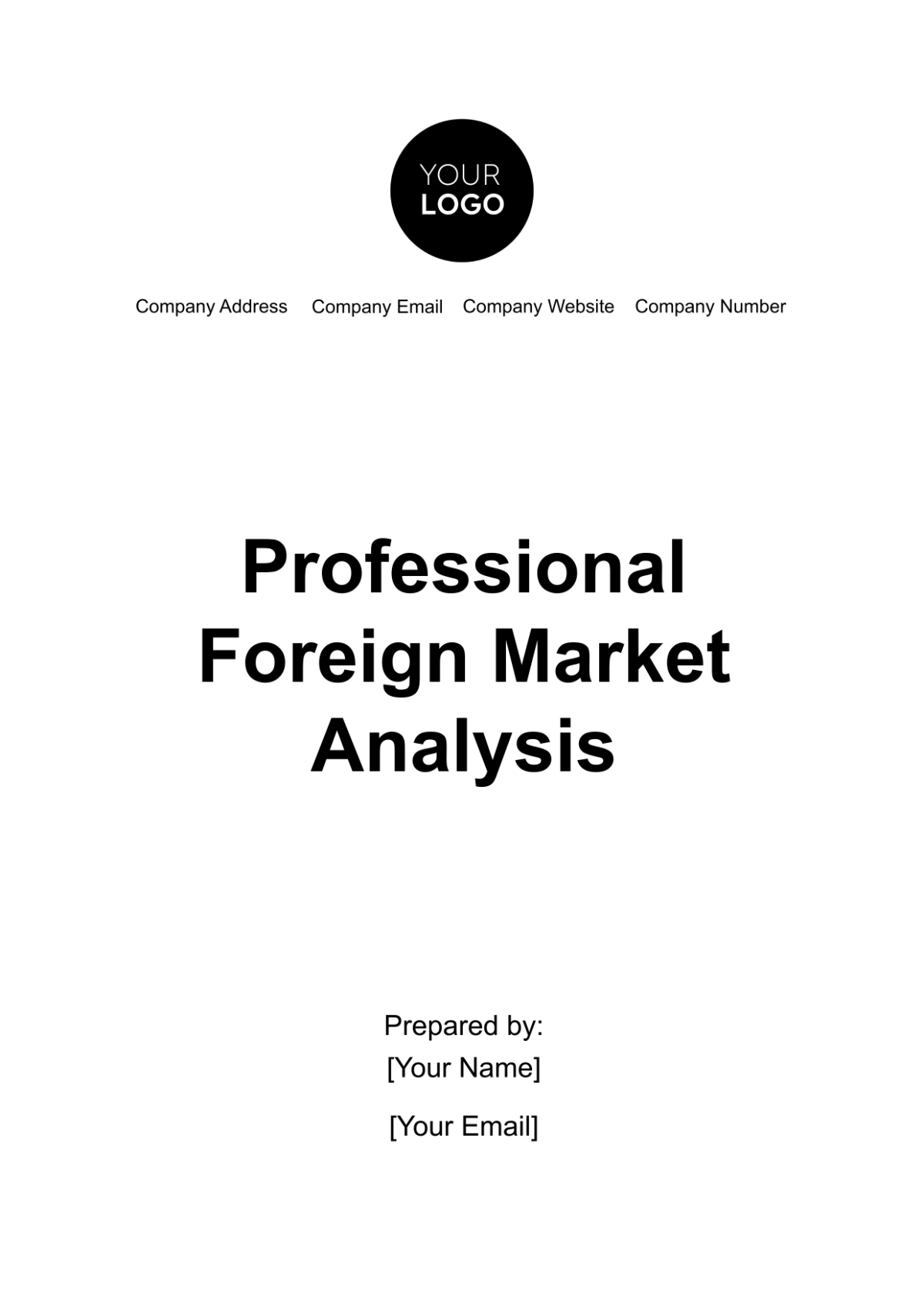
I. Introduction
Expanding into foreign markets presents a unique opportunity for [Your Company Name] to grow its brand and increase revenue. As the global bakery industry experiences steady growth, driven by evolving consumer preferences and rising demand for premium baked goods, [Your Company Name] aims to strategically position itself to capture a share of this expanding market. This Professional Foreign Market Analysis will explore key international markets, assess their potential, and outline strategic recommendations to ensure a successful entry and sustainable growth in these regions.
Understanding the intricacies of foreign markets is essential for [Your Company Name] to navigate challenges and leverage opportunities effectively. This analysis will cover market trends, competitive landscape, regulatory considerations, and consumer behavior specific to each target region. By gaining a comprehensive understanding of these factors, [Your Company Name] will be well-equipped to make informed decisions, adapt its product offerings, and tailor its marketing strategies to meet the needs of diverse consumer bases. The insights provided will guide the development of a robust international expansion plan, setting the foundation for long-term success in the global bakery market.
II. Economic Conditions
Understanding the economic conditions of potential foreign markets is essential for [Your Company Name] to gauge their attractiveness and viability. Key indicators such as Gross Domestic Product (GDP) and inflation rates provide valuable insights into a country's economic health and stability. By analyzing GDP figures, we can assess the overall economic growth potential and market size. Similarly, tracking inflation rates helps us understand the purchasing power of consumers and anticipate potential cost fluctuations. This section delves into these economic indicators to guide strategic decision-making for international expansion.
A. Gross Domestic Product (GDP)
The GDP of a country gives insights into the overall economic health and growth potential of the market. Analyzing the GDP trends can help predict future economic stability.
Country | GDP (in Billion USD) | Annual Growth Rate (%) |
|---|---|---|
Country A | 3,500 | 3.5 |
Country B | 2,800 | 4.0 |
Country C | 1,600 | 2.8 |
B. Inflation Rates
Monitoring inflation rates is crucial for understanding the purchasing power and potential cost increases in a foreign market.
Country | Inflation Rate (%) |
|---|---|
Country A | 2.0 |
Country B | 1.8 |
Country C | 2.5 |
III. Market Demand
Assessing market demand is crucial for [Your Company Name] to identify and capitalize on lucrative opportunities in foreign markets. This section focuses on two key aspects: consumer behavior and market size. Understanding consumer behavior, including preferences for local versus international brands, spending habits, and loyalty trends, provides insights into how consumers engage with bakery products and their purchasing decisions. Additionally, evaluating market size and growth potential helps in identifying promising segments and forecasting future demand. By analyzing these factors, [Your Company Name] can make informed decisions on product offerings and market strategies for successful international expansion.
A. Consumer Behavior
Understanding consumer behavior is essential for forecasting the demand for products and services. Factors such as buying preferences, spending patterns, and product acceptance play a significant role.
Preference for local vs. international brands
Spending habits on luxury vs. necessity goods
Loyalty trends
B. Market Size and Growth Potential
Evaluating the market size and potential growth can assist in resource allocation and strategic planning. Below are estimates for specific markets:
Segment | Market Size (in Million USD) | Growth Rate (%) |
|---|---|---|
Electronics | 450 | 7.5 |
Healthcare | 320 | 5.0 |
Automobiles | 600 | 4.3 |
IV. Competitive Landscape
Understanding the competitive landscape is vital for [Your Company Name] to navigate the foreign market effectively. This section analyzes major competitors to identify their strengths and weaknesses, which will inform our market entry strategy. Additionally, a SWOT analysis will highlight opportunities and threats, helping to position [Your Company Name] advantageously. By comprehensively examining these factors, we can develop strategies to differentiate our brand and capitalize on market opportunities.
A. Major Competitors
Knowing who the major competitors are and understanding their strengths and weaknesses can help in creating effective market entry strategies.
Company | Strengths | Weaknesses |
|---|---|---|
Company X | Strong brand presence, extensive distribution network | High cost |
Company Y | Known for innovation, strong R&D | Limited market share |
Company Z | Cost-effective production, large market share | Brand value |
B. SWOT Analysis
This analysis provides insights into how [Your Company Name] can leverage competitor weaknesses, capitalize on market opportunities, and anticipate potential challenges in the foreign market.
Company | Strengths | Weaknesses | Opportunities | Threats |
|---|---|---|---|---|
Company X | Brand loyalty, Distribution | High cost | Expanding markets | Regulatory constraints |
Company Y | Innovation, R&D | Limited market share | Technological advancements | Competitive pressure |
Company Z | Cost-effective | Brand value | Growing demand | Economic fluctuations |
V. Regulatory Environment
and optimize market entry strategies. This section delves into trade policies and legal considerations that influence doing business in foreign markets. By examining tariffs, quotas, and trade agreements, we can understand how trade policies affect costs and market access. This knowledge is essential for strategic planning and avoiding potential barriers to entry.
Additionally, legal considerations such as intellectual property protection, labor laws, and environmental regulations are pivotal for maintaining operational integrity and competitive advantage. This analysis will help [Your Company Name] navigate complex regulatory landscapes and align its strategies with local legal requirements.
A. Trade Policies
Trade policies can impact the ease of doing business in foreign markets. Understanding tariffs, quotas, and import-export regulations is critical.
Tariffs and duties
Import quotas
Trade agreements
B. Legal Considerations
Legal aspects such as intellectual property rights, labor laws, and environmental regulations can affect market strategies.
Intellectual Property Protection
Labor Laws and Employee Rights
Environmental Regulations
VI. Cultural Considerations
Cultural considerations are key to successfully entering and operating in foreign markets. This section explores language and communication styles, as well as social and cultural norms that influence consumer behavior and business practices. By understanding these cultural factors, [Your Company Name] can tailor its marketing strategies and operational approaches to resonate with local audiences and avoid potential missteps.
A. Language and Communication
Effective communication is vital for successful market entry. This section examines the preferred business languages, communication styles, and local advertising norms to ensure that [Your Company Name] can engage effectively with stakeholders and consumers, and tailor its marketing strategies to fit local preferences.
Preferred Language for Business
Official Languages
Regional Dialects
Language Preferences in Business Settings
Communication Styles
Direct vs. Indirect Communication
Formal vs. Informal Communication
Non-Verbal Communication
Local Advertising Norms
Popular Media Channels
Advertising Content and Tone
Regulatory Guidelines for Advertising
B. Social and Cultural Norms
Understanding social and cultural norms is crucial for aligning business practices with local expectations. This section explores business etiquette, consumer attitudes, and the impact of holidays and festivals on demand, helping [Your Company Name] adapt its approach to resonate with local culture and maximize market acceptance.
Business Etiquette
Meeting Protocols
Negotiation Practices
Relationship Building
Consumer Attitudes and Beliefs
Cultural Values and Preferences
Attitudes Toward Foreign Brands
Buying Motivations
Holiday and Festival Impacts on Demand
Major Local Holidays and Festivals
Seasonal Buying Trends
Special Promotions and Product Offerings
VII. Conclusion
Entering a foreign market involves navigating a complex array of factors that can significantly impact business outcomes. By thoroughly analyzing economic conditions, market demand, competitive dynamics, regulatory environments, and cultural considerations, [Your Company Name] can make well-informed decisions that align with both market opportunities and potential risks. This comprehensive understanding is crucial for developing effective strategies that enhance market entry and long-term success.
A strategic approach, grounded in detailed market analysis, allows [Your Company Name] to adapt its offerings, optimize its operations, and engage effectively with local consumers. This meticulous preparation not only helps in avoiding common pitfalls but also positions the company to leverage competitive advantages and achieve sustainable growth in new international markets.
- 100% Customizable, free editor
- Access 1 Million+ Templates, photo’s & graphics
- Download or share as a template
- Click and replace photos, graphics, text, backgrounds
- Resize, crop, AI write & more
- Access advanced editor
Expand your global reach with the Professional Foreign Market Analysis Template from Template.net. Fully customizable and editable, this template provides a comprehensive format for analyzing foreign markets, helping you identify opportunities and challenges. Editable in our AI Editor Tool, it ensures your analysis is thorough, professional, and tailored to your international business strategy.




